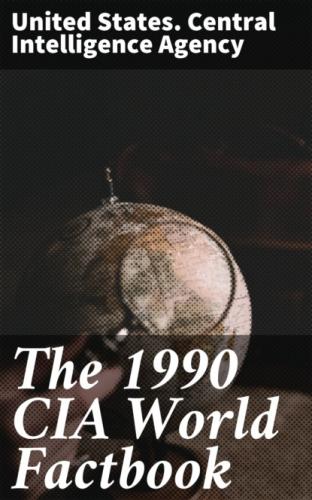Total area: 13,940 km2; land area: 10,070 km2
Comparative area: slightly larger than Connecticut
Land boundaries: none
Coastline: 3,542 km
Maritime claims:
Continental shelf: 200 meters or to depth of exploitation;
Exclusive fishing zone: 200 nm;
Territorial sea: 3 nm
Climate: tropical marine; moderated by warm waters of Gulf Stream
Terrain: long, flat coral formations with some low rounded hills
Natural resources: salt, aragonite, timber
Land use: 1% arable land; NEGL% permanent crops; NEGL% meadows and pastures; 32% forest and woodland; 67% other
Environment: subject to hurricanes and other tropical storms that cause extensive flood damage
Note: strategic location adjacent to US and Cuba; extensive island chain
- People
Population: 246,491 (July 1990), growth rate 1.2% (1990)
Birth rate: 17 births/1,000 population (1990)
Death rate: 6 deaths/1,000 population (1990)
Net migration rate: 0 migrants/1,000 population (1990)
Infant mortality rate: 21 deaths/1,000 live births (1990)
Life expectancy at birth: 68 years male, 75 years female (1990)
Total fertility rate: 1.9 children born/woman (1990)
Nationality: noun—Bahamian(s); adjective—Bahamian
Ethnic divisions: 85% black, 15% white
Religion: Baptist 29%, Anglican 23%, Roman Catholic 22%, smaller groups of other Protestants, Greek Orthodox, and Jews
Language: English; some Creole among Haitian immigrants
Literacy: 95% (1986)
Labor force: 132,600; 30% government, 25% hotels and restaurants, 10% business services, 5% agriculture (1986)
Organized labor: 25% of labor force
- Government
Long-form name: The Commonwealth of The Bahamas
Type: commonwealth
Capital: Nassau
Administrative divisions: 21 districts; Abaco, Acklins Island,
Andros Island, Berry Islands, Biminis, Cat Island, Cay Lobos, Crooked Island,
Eleuthera, Exuma, Grand Bahama, Harbour Island, Inagua, Long Cay, Long Island,
Mayaguana, New Providence, Ragged Island, Rum Cay, San Salvador, Spanish Wells
Independence: 10 July 1973 (from UK)
Constitution: 10 July 1973
Legal system: based on English common law
National holiday: Independence Day, 10 July (1973)
Executive branch: British monarch, governor general, prime minister, deputy prime minister, Cabinet
Legislative branch: bicameral Parliament consists of an upper house or
Senate and a lower house or House of Assembly
Judicial branch: Supreme Court
Leaders: Chief of State—Queen ELIZABETH II (since 6 February 1952), represented by Acting Governor General Sir Henry TAYLOR (since 26 June 1988);
Head of Government—Prime Minister Sir Lynden Oscar PINDLING (since 16 January 1967)
Political parties and leaders: Progressive Liberal Party (PLP),
Sir Lynden O. Pindling; Free National Movement (FNM), Cecil Wallace-Whitfield
Suffrage: universal at age 18
Elections: House of Assembly—last held 19 June 1987 (next to be held by June 1992); results—percent of vote by party NA; seats—(49 total) PLP 31, FNM 16, independents 2
Communists: none known
Other political or pressure groups: Vanguard Nationalist and Socialist
Party (VNSP), a small leftist party headed by Lionel Carey; Trade Union
Congress (TUC), headed by Arlington Miller
Member of: ACP, CARICOM, CCC, CDB, Commonwealth, FAO, G-77,
GATT (de facto), IBRD, ICAO, IDB—Inter-American Development Bank, ILO, IMF,
IMO, INTELSAT, INTERPOL, ITU, NAM, OAS, PAHO, UN, UNESCO, UPU, WHO, WIPO, WMO,
WTO
Diplomatic representation: Ambassador Margaret E. MCDONALD; Chancery at Suite 865, 600 New Hampshire Avenue NW, Washington DC 20037; telephone (202) 944–3390; there are Bahamian Consulates General in Miami and New York; US—Ambassador Chic HECHT; Embassy at Mosmar Building, Queen Street, Nassau (mailing address is P. O. Box N-8197, Nassau); telephone (809) 322–1181 or 328–2206
Flag: three equal horizontal bands of aquamarine (top), gold, and aquamarine with a black equilateral triangle based on the hoist side
- Economy Overview: The Bahamas is a stable, middle-income developing nation whose economy is based primarily on tourism and offshore banking. Tourism alone provides about 50% of GDP and directly or indirectly employs about 50,000 people or 40% of the local work force. The economy has boomed in recent years, aided by a steady annual increase in the number of tourists. The per capita GDP of over $9,800 is one of the highest in the region.
GDP: $2.4 billion, per capita $9,875; real growth rate 2.0% (1988 est.)
Inflation rate (consumer prices): 4.1% (1988)
Unemployment: 12% (1986)
Budget: revenues $555 million; expenditures $702 million, including capital expenditures of $138 million (1989 est.)
Exports: $733 million (f.o.b., 1987); commodities—pharmaceuticals, cement, rum, crawfish; partners—US 90%, UK 10%
Imports: $1.7 billion (c.i.f., 1987); commodities—foodstuffs, manufactured goods, mineral fuels; partners—Iran 30%, Nigeria 20%, US 10%, EC 10%, Gabon 10%
External debt: $1.5 billion (September 1988)
Industrial production: growth rate NA%
Electricity: 368,000 kW capacity; 857 million kWh produced, 3,470 kWh per capita (1989)
Industries: banking, tourism, cement, oil refining and transshipment, salt production, rum, aragonite, pharmaceuticals, spiral weld, steel pipe
Agriculture: accounts for less than 5% of GDP; dominated by small-scale producers; principal products—citrus fruit, vegetables, poultry; large net importer of food
Aid: US commitments, including Ex-Im (FY70–80), $42 million; Western (non-US) countries, ODA and OOF bilateral commitments (1970–87), $344 million
Currency: Bahamian dollar (plural—dollars); 1 Bahamian dollar
(B$) = 100 cents
Exchange rates: Bahamian dollar (B$) per US$1—1.00 (fixed rate)
Fiscal year: calendar year
- Communications
Highways: 2,400 km total; 1,350 km paved, 1,050 km gravel
Ports: Freeport, Nassau
Merchant marine: 533 ships (1,000 GRT or over) totaling 11,684,123 GRT/19,574,532 DWT; includes 26 passenger, 15 short-sea passenger, 121 cargo, 40 roll-on/roll-off cargo, 42 refrigerated cargo, 16 container, 6 car carrier, 123 petroleum, oils, and lubricants (POL) tanker, 6 liquefied gas, 19 combination ore/oil, 29 chemical tanker, 1 specialized tanker, 86
